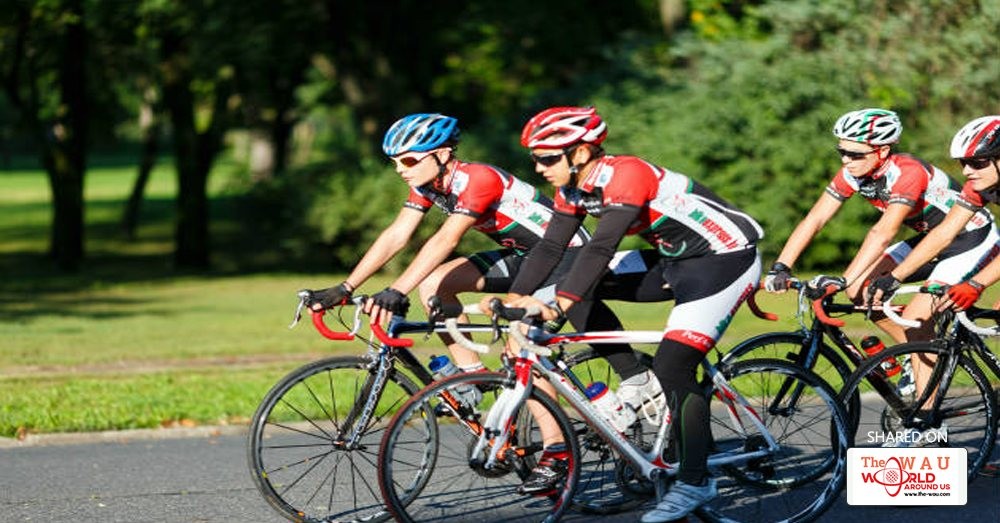Find out how to stay safe when cycling alone or when heading out with a group.
Cycling in a group, or even alone, can be a daunting experience for the beginner. Cycle alone and you are responsible just for yourself, whereas going out in a group means that you are jointly responsible for the safety of everyone in that group and your actions on your bike must reflect this. Here's our guide whether you are going it alone or as part of a larger group of riders.
Cycling alone
Cycling alone can be a good way to get away from it all, but a solitary bike ride throws up many things for the rider to consider, from safety issues to achieving your training goals. When riding with a partner or friend, there is the added bonus of an extra pair of eyes on the look out for danger and someone to help out in the unfortunate instance of an accident.
However, convenience dictates that it is easier to go out cycling alone due to the difficulties in arranging a time suitable for two or more of you. So, more often than not the cyclist's lot is a solitary one which puts the onus on real self-discipline and motivation.
One of the main hazards to the solo cyclist is traffic. A group of cyclists are easier for the motorist to spot and they have the added bonus of providing several sets of eyes to spot potential hazards that a solo rider might miss.
One of the difficulties faced is the need to watch the road behind. When most riders look behind them, their bike inevitably drifts in the direction they are looking and it is easy to drift right into oncoming traffic if something catches the cyclist's attention. One solution is to drop the right hand from the bars if looking over the right shoulder, and make the glance as quick as possible. Another is to have a rear view mirror attached, but like all mirrors, these have blind spots.
It is, however, important that the cyclist makes good use of a look back when riding alone. A quick glance can help keep track of what is happening on the road and can also let an overtaking driver know that you are aware of him. A look back can also help keep other road users from passing when it's not safe.
If cycling alone, it is advisable that the rider does not to lose sight of their training goals. If the ride is intended to improve fitness levels then a specific plan must be drawn up rather than just aimlessly riding with no definite goals.
Riding in a group
There is no more effective way to become a motivated cyclist than finding a good group ride or having a regular training partner. Riding with others has several other benefits including improved safety and efficiency from slipstreaming.
Slipstreaming (also know as drafting or pacing) is riding or sheltering behind fellow riders, to save energy. It allows the cyclist to keep up with far faster riders and travel at speeds they wouldn’t normally reach as an individual. Riders take turns at the front of the group, and after doing their stint, move to the rear to take advantage of the shelter being provided by the group.
It is estimated that this saves as much as a third of a following rider's energy, while the rider or pacemaker at the front also saves about 5 per cent of his effort by having someone behind him because of the way air closes in from behind.
How close to ride?
Simply put, the closer you draft, the better the slipstream. However, riders shouldn't try to draft closer than is safe for their skill level. Beginners should leave about 3ft (91cm), and good riders leave around 1 to 1.5ft (30 to 45cm). The idea is to get as close as you can without the chance of touching wheels with another rider. Extra care should be taken when slipstreaming down a hill.
Group cycle riding tips:
- Do not overlap the rear wheel of the rider in front.
- Try to maintain a consistent pace if at the front.
- If increasing the pace, do it gradually with an eye to keeping the group together.
- Signal your intentions by hand or voice if you are about to change positions.
- Go hard on the more difficult sections but don't forget to regroup.
- Don’t take to the front only to slow down.
- If the group does get split, ride slow until the rear group has caught up.
- If riding into a headwind, make changes at the front more frequently to share the workload.
- If needing to stop, make the others in the group aware.
- Make sure the group wait for anyone suffering a puncture or any other difficulty.
Share This Post














